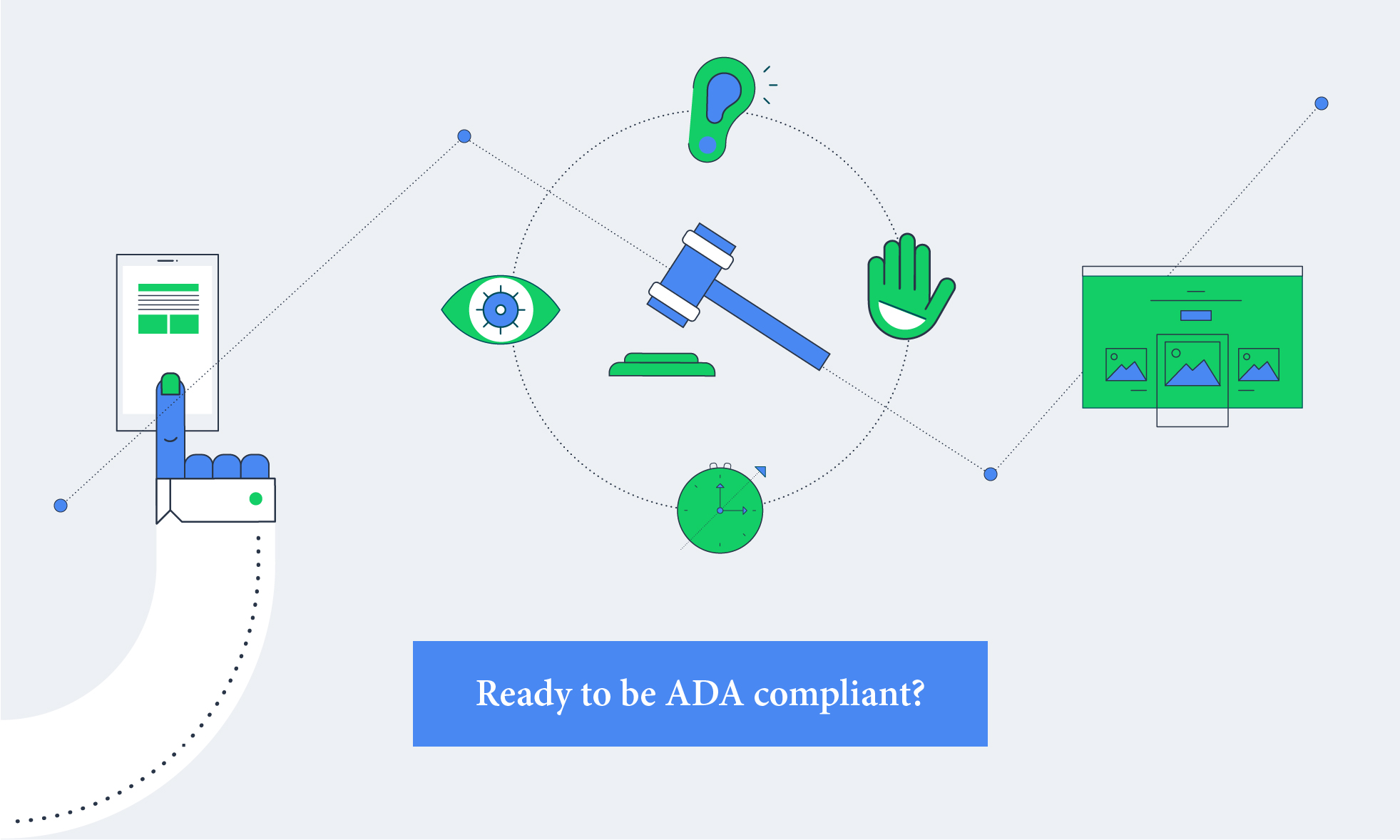Steps to Ensure Your Website is ADA Compliant
Laws like the Americans with Disabilities Act (ADA) are in place to ensure all Americans have fair and equal access to programs, services and activities. Sounds great, right? It is…but, as the digital world becomes an increasingly large part of that list, the ADA has expanded regulations with the ADA Standards for Accessible Design, which now includes websites. Before you think you can skate by without complying, think again. Laws and consortiums are finally setting deadlines for websites to get compliant…and those deadlines are a whole lot closer than you think.
ADA, 508 and WCAG 2.0 (Web Content Accessibility Guidelines) Compliance has expanded to include consumer websites. Additionally, these standards are now federally regulated and include a list of requirements that must be implemented on your site. This affects all technology that falls under Section 508 standards and any content that is altered or created after January 18, 2018.
Your website’s compliance with these regulations can have a huge impact on your business, as failing to do so may bring you face-to-face with a lawsuit (and, conversely, complying may provide millions of consumers with disabilities with the ability to navigate your website much more easily).
To prevent the negative implications of non-compliance, here are steps to ensure your website is ready to meet ADA standards:
Step 1. Be aware
There are many different components of ADA compliance and not all apply to your website. The technical ruling includes any websites that fall under the updated 508 Standards.
“The updated 508 Standards apply to a federal agency’s full range of public-facing content, including websites, documents and media, blog posts, and social media sites. The final rule also specifically lists the types of non-public-facing content that must comply.” -The United States Access Board
This includes websites from all industries, including technology, healthcare, restaurant, entertainment, finance and ecommerce.
Most likely, your website falls into the category of those that need to meet ADA standards. Once you determine whether or not you need to comply, move on to understanding the details.
Step 2. Know the details
One aspect of this update is incorporating web standards established by WCAG 2.0, a set of international guidelines that are expected to be published as a standard in 2018. The ruling for WCAG 2.0 was created in part with standard-setting organizations, including the World Wide Consortium (W3C). This is how W3C describes WCAG 2.0:
“Web Content Accessibility Guidelines (WCAG) 2.0 covers a wide range of recommendations for making Web content more accessible. Following these guidelines will make content accessible to a wider range of people with disabilities, including blindness and low vision, deafness and hearing loss, learning disabilities, cognitive limitations, limited movement, speech disabilities, photosensitivity and combinations of these. Following these guidelines will also often make your Web content more usable to users in general.”
WCAG 2.0 is a technical standard that is broken into 4 principles:
- Perceivable
“Information and user interface components must be presentable to users in a way they can perceive.” - Operable
“User interface component and navigation must be operable.” - Understandable
“Information and the operation of user interface must be understandable.” - Robust
“Content must be robust enough that it can be interpreted reliably by a wide variety of user agents, including assistive technologies.”
These are the four principles on which the WCAG 2.0 guidelines are based and they only scratch the service of what these guidelines entail. Want more details? Read about WCAG 2.0, here.
Step 3: Determine your level of compliance
The four principles listed above are broken into 12 guidelines that are organized by levels of importance:
- Level A = Must Comply
- Level AA = Should Comply
- Level AAA = May Comply
Depending on what kind of website/business you have, you may need (or want) to comply with different guidelines and not others. While all level A guidelines must be met, it is up to you to decide what level of compliance you will adhere to beyond that. Is this a multimillion-dollar lawsuit a risk you’re willing to take?
Step 4: Put a plan in place to make updates
Here’s the hard part…put the above regulations into practice on your website and digital collateral. For some, this may not require much updating (if any), but for most, this could require many hours of updates to your online presence.
With the recent push to regulate these standards, the need to get your website up-to-snuff with ADA, 508 and WCAG is pressing. As a team highly-focused on all-things-digital, we have experience creating and updating websites with ADA standards in mind, including clients like the U.S. Air Force Academy. If you have questions about compliance on your website or are looking for a partner to help you make updates, we can help.
Let us help you! CONTACT US
Updated: Apr 13, 2022

 Kati Terzinski
Kati Terzinski Erin Murray
Erin Murray